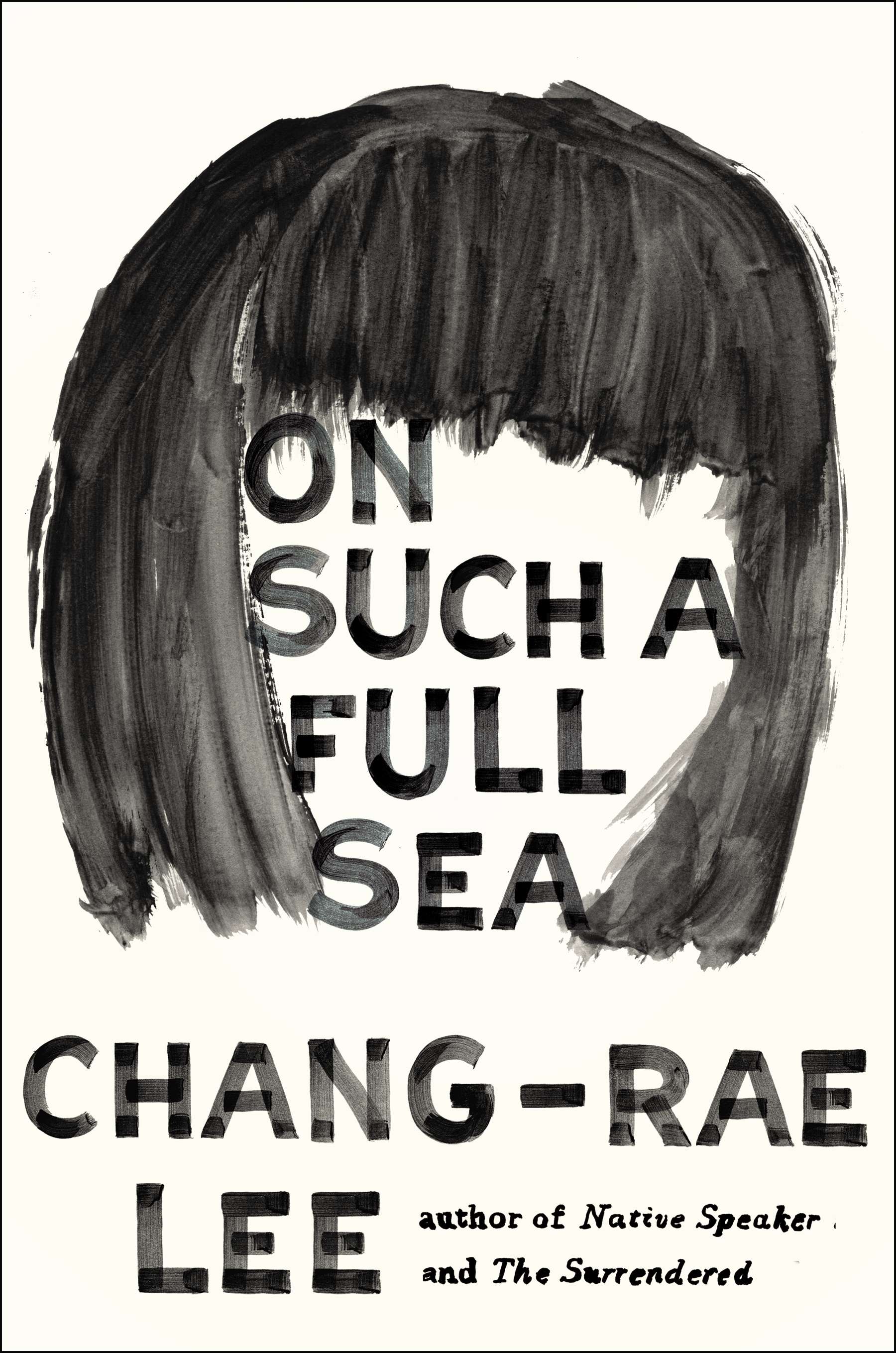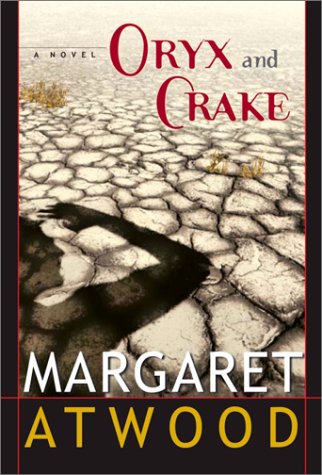16 Pieces of Pop Culture About Climate Change, From Atwood to Spielberg to the Pixies
Let’s talk about cli-fi!
Have you ever heard of “cli-fi”? It’s a new trend emerging in pop culture—essentially, it’s fiction that features climate change as an integral plot device. It seems that as climate change becomes part of our reality here on Earth, it’s helpful to look at fiction to see what we might expect.
Today on the show, author Paolo Bacigalupi and University of Oregon professor Stephanie LeMenager will be giving us an inside look at this trend. But first, we asked our SciFri staff, as well as a few sci-fi experts—and you—for suggestions on the best cli-fi:
Do you have a favorite piece of fiction (novel, movie, etc.) that features climate change? We’re working on a list! pic.twitter.com/j5mIsewGLG
— Science Friday (@scifri) April 6, 2016

On Such a Full Sea, by Chang-Rae Lee
Annie Minoff, producer at Science Friday
“This is a novel set in a dystopian, near-future Baltimore. The causes of the city’s collapse aren’t exactly named, though the environment is clearly degraded. What I like about this book is that it shows how environmental collapse affects people unequally. In On Such a Full Sea, when things get bad, they get especially bad for those on the bottom of the economic totem pole.”
“The Calorie Man” (From Pump Six and Other Stories), by Paolo Bacigalupi
Christian Skotte, director of program strategy at Science Friday
“Much of science fiction imagines a post-petroleum future. But in many cases, the fuel sources the future uses are better and more efficient than gasoline. In this story—like in much of Bacigalupi’s fiction—people have moved backwards to animal-power. Which means that crops become highly engineered to feed beasts big enough to power society.”
Annihilation, by Jeff VanderMeer
Annalee Newitz, tech culture editor at Ars Technica
“Annihilation is a fantasy novel about an environmental scientist who’s studying what seems to be this rift in spacetime that’s developed in Florida. It’s very much a kind of psychological drama about what it feels like to be confronting existential threats. How do you say, ‘Ok, I’m a scientist with a notebook, I’m taking notes, I’m figuring out what’s happening to this ecosystem’ when at the same time, there’s this yawning chasm of fear—‘What’s going to happen to our planet? What’s going to happen to the people in it?’”
Nausicaa of the Valley of the Wind, directed by Hayao Miyazaki
.@scifri “Nausicaa of the Valley of the Wind” by Miyazaki. Saw it as a young adult and ignited my interest in ecology and conservation.
— leoverdugo (@leoverdugo) April 6, 2016
Blu-ray available through Amazon.
IDP: 2043, edited by Denise Mina
Stephen Siperstein, Ph.D. candidate in English at the University of Oregon
“This graphic novel was published in Scotland and written by 10 different graphic artists who all contributed to the dystopian plot and illustrations. It’s an interesting collaborative form of cli-fi, in which people came together to co-imagine a climate changed future.”

Oryx and Crake, by Margaret Atwood
Christie Taylor, radio producer for Science Friday
“Even though it’s a book in which the major crisis is about the role of runaway corporate influence in daily life and, eventually, a biological plague, it’s set against this background of a changing climate as well. I forget where exactly it’s set, but the implication is that it’s a city whose climate is dramatically hotter and wetter than in our time, and this colors the general bleakness of the entire story. (And her whole MadAddam trilogy exists in this world, but Oryx and Crake is really the classic.)”
“Monkey Gone to Heaven,” by The Pixies
Christian Skotte, director of program strategy at Science Friday
“There aren’t too many pop songs about climate change. But this one manages to reference the hole in the ozone layer and global warming. Unfortunately, things don’t go too well for the primates Black Francis sings about.”
Seveneves, by Neal Stephenson
@scifri Seveneves. Though the “climate change” is caused by the moon blowing up…
— Der Playoffs-Bär (@DerBaylorBaer) April 6, 2016
The Great Immensity, written and directed by Steve Cosson, music and lyrics by Michael Friedman
Jen Kwok, bookkeeper at Science Friday
“I saw a really interesting play last year called The Great Immensity. It was produced by the theatre group The Civilians and ran at the Public Theater. This play really stood out to me because it explored the emotional issues surrounding climate change—abstract things that are usually difficult to put into words, like what will happen to “our children” (the plot revolves around a group of child activists) or the sadness of a species going extinct (there’s a memorable musical number about the passenger pigeon).”
Learn more about the play here.
Waterworld, directed by Kevin Costner
Julie Leibach, managing editor of ScienceFriday.com
“This movie envisioned a future where the ice caps have melted and inundated most of the globe, and surviving humans vie for resources while hunting for dry land. Maybe that scenario doesn’t seem so crazy now.”
Available for streaming on Showtime.
Red Mars, by Kim Stanley Robinson
@scifri Dune is epic, but Kim Stanley Robinson’s “Red Mars” features climate change on Mars *and* some top notch social #scifi
— Jesse Emspak (@Mad_Science_Guy) April 6, 2016
The Dispossessed, by Ursula LeGuin
@scifri check out Ursula LeGuin’s “The Dispossessed” the latter half includes a fictional bleak history for earth’s envonironment
— Temani F. Aldine (@yogalawyer) April 7, 2016
A.I.: Artificial Intelligence, directed by Steven Spielberg
Brandon Echter, engagement manager for Science Friday
“When you think of this 2001 science fiction fairy tale, you probably think of the blue fairy, the robot fair, the weird alien things at the end… but I always think of the chilling opening narration: ‘Those were the years after the ice caps melted because of the greenhouse gases, and the oceans had risen to drown so many cities along all the shorelines of the world—Amsterdam, Vence, New York, forever lost.’ The narrator describes a world of climate change run amok, where resources have become scarce and robots, who only require resources when created, become necessary. Plus, who can forget that striking shot of a sunken Manhattan?”
Available for rental on Amazon.
The Matrix, directed by The Wachowskis
@scifri “The Matrix Trilogy” (remaining humans driven under ground, near the core, where its still warm)(cause: robot take over)
— Tony (@tony_2nd_player) April 7, 2016
Available for rental on Amazon.
Ori and the Blind Forest, created by Moon Studios
@scifri Ori and the Blind Forest. The opening scene and video clips throughout the game are so sad we needed tissue to dab our eyes! Really!
— Michelle Bailey (@BansheeATx) April 6, 2016
Science in The Capital series, by Kim Stanley Robinson
@scifri Kim Stanley Robinson wrote an entire trilogy called Science in the Capital about climate change, first book is “Forty Signs of Rain”
— Tess Thyer (@TessThyer) April 7, 2016
What did we miss? Let us know in the comments!
Brandon Echter was Science Friday’s digital managing editor. He loves space, sloths, and cephalopods, and his aesthetic is “cultivated schlub.”